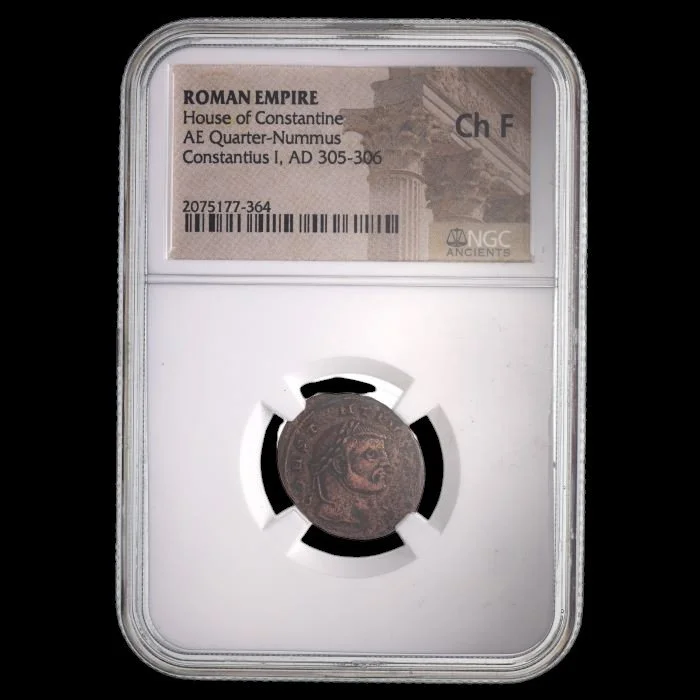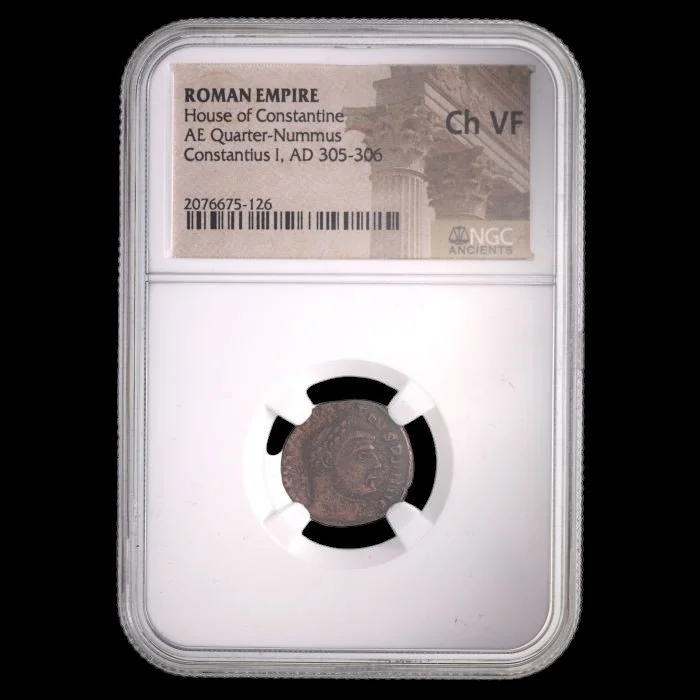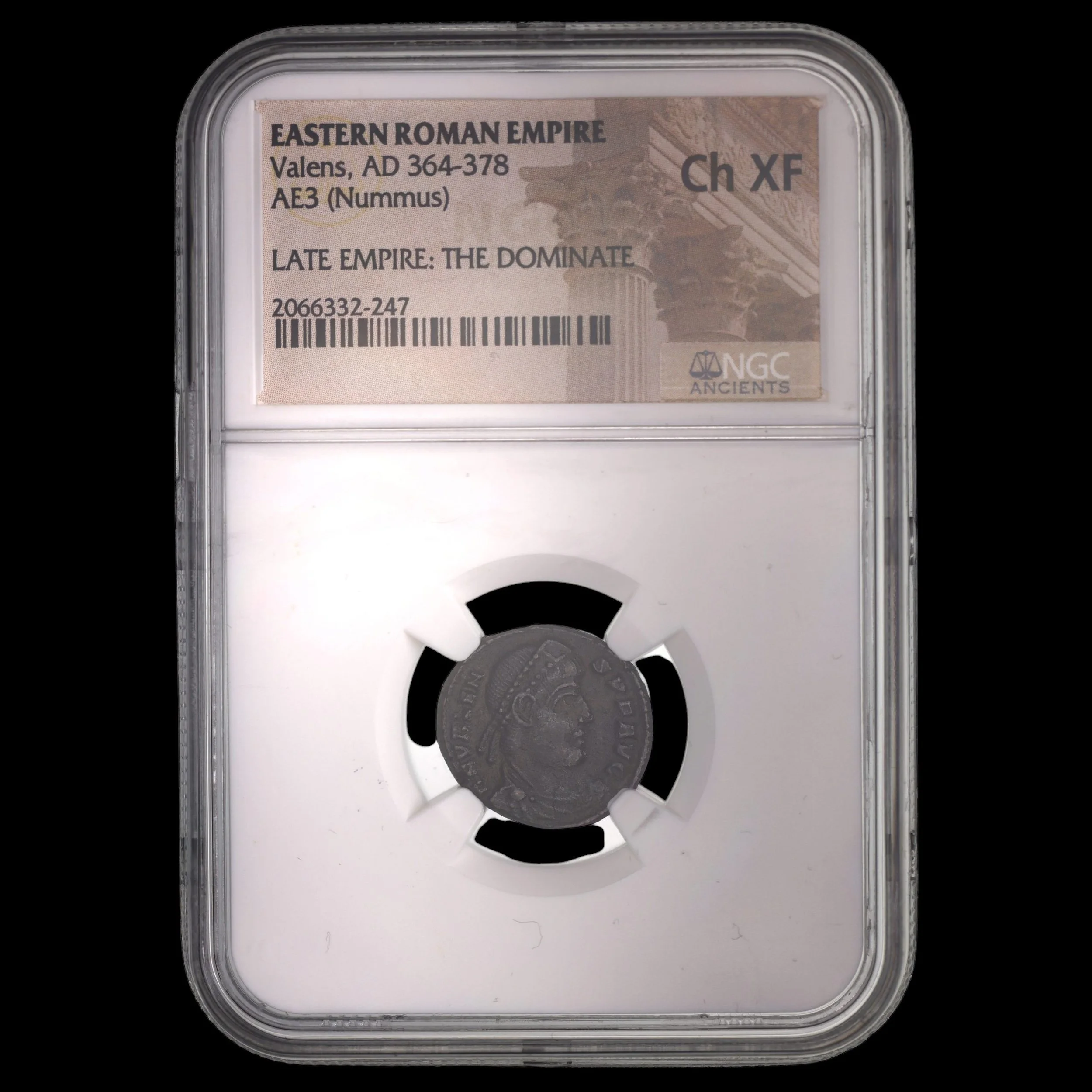 Image 1 of 4
Image 1 of 4

 Image 2 of 4
Image 2 of 4

 Image 3 of 4
Image 3 of 4

 Image 4 of 4
Image 4 of 4





Roman AE Of Constantine II (Epfig Hoard) (about 1,685-1,710 years ago)
The coins shown are representative examples of the grade and type, but not the actual specimens for sale. For details on NGC’s grading standards and definitions, please refer to our NGC Grading page.
This bronze coin from the Epfig Hoard was minted during the reign of Constantine II, eldest son of Constantine the Great. As part of a famous coin hoard discovered in eastern France, this piece represents the dynastic succession that followed Constantine the Great's revolutionary reign.
Coin Description:
Front side: Profile portrait of the young Constantine II, likely wearing a laurel wreath or diadem, with his name and titles in Latin around the edge
Back side: Probably features military standards, victory imagery, or other symbolic representations common on imperial coinage of this period
Technical Details:
Bronze composition (copper alloy)
AE denomination (referring to bronze coinage)
NGC certified (Numismatic Guaranty Corporation)
Minted between 316-340 CE
Part of the Epfig Hoard find
Condition: Certified by NGC, specific grade not provided
Historical Significance: This coin reflects the complex dynastic politics following Constantine the Great's death in 337 CE. Constantine II, designated a Caesar (junior emperor) during childhood, received the western provinces when the empire was divided among Constantine's sons. His brief independent reign ended in 340 CE when he invaded his brother Constans' territory and was killed in battle near Aquileia (modern northeastern Italy), illustrating the persistent struggle for power among imperial heirs despite Constantine the Great's efforts to establish a stable succession.
The coins shown are representative examples of the grade and type, but not the actual specimens for sale. For details on NGC’s grading standards and definitions, please refer to our NGC Grading page.
This bronze coin from the Epfig Hoard was minted during the reign of Constantine II, eldest son of Constantine the Great. As part of a famous coin hoard discovered in eastern France, this piece represents the dynastic succession that followed Constantine the Great's revolutionary reign.
Coin Description:
Front side: Profile portrait of the young Constantine II, likely wearing a laurel wreath or diadem, with his name and titles in Latin around the edge
Back side: Probably features military standards, victory imagery, or other symbolic representations common on imperial coinage of this period
Technical Details:
Bronze composition (copper alloy)
AE denomination (referring to bronze coinage)
NGC certified (Numismatic Guaranty Corporation)
Minted between 316-340 CE
Part of the Epfig Hoard find
Condition: Certified by NGC, specific grade not provided
Historical Significance: This coin reflects the complex dynastic politics following Constantine the Great's death in 337 CE. Constantine II, designated a Caesar (junior emperor) during childhood, received the western provinces when the empire was divided among Constantine's sons. His brief independent reign ended in 340 CE when he invaded his brother Constans' territory and was killed in battle near Aquileia (modern northeastern Italy), illustrating the persistent struggle for power among imperial heirs despite Constantine the Great's efforts to establish a stable succession.


































